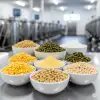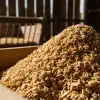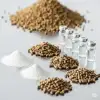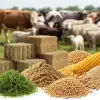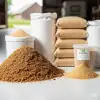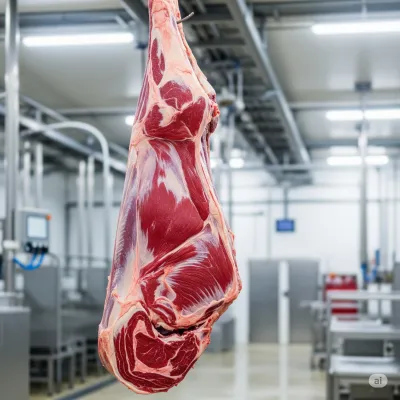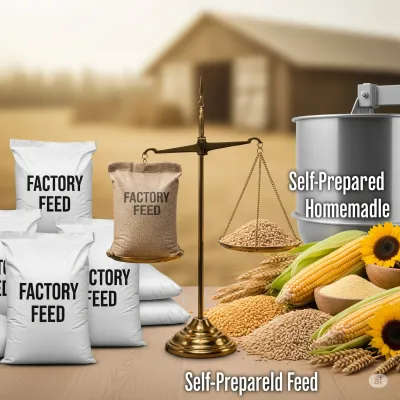The Most Efficient Dairy Feed Ration: Strategies for High Milk Yield and Profitability
How to prepare the most efficient dairy feed ration? Discover forages, concentrates, and additives for high milk yield, quality, and animal health in dairy farming.
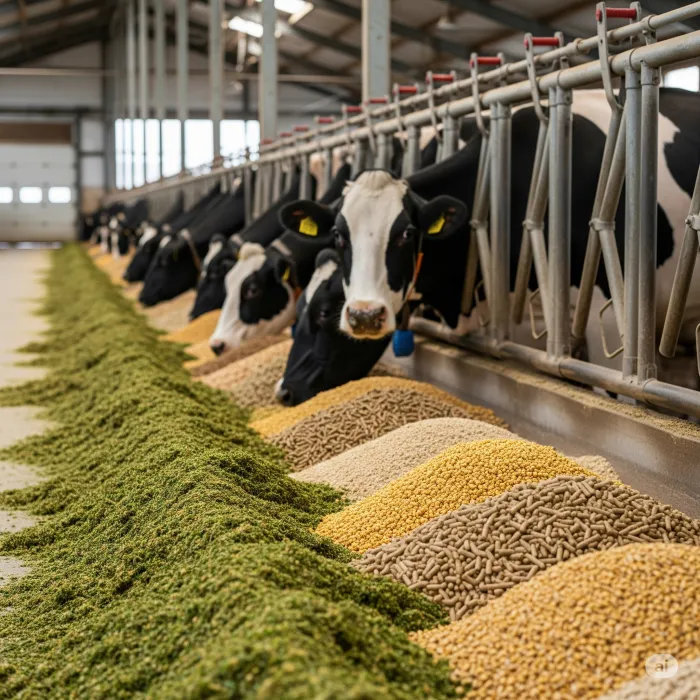
The Most Efficient Dairy Feed Ration: Strategies for High Milk Yield and Profitability
One of the most critical elements forming the basis of profitability in dairy cattle farms is the **efficiency of the dairy feed ration** provided to animals. "The most efficient" ration not only ensures high milk yield but also optimizes milk quality (fat and protein), animal health, and thus the overall profitability of the farm. While there isn't a single "perfect ration" formula, as each farm's conditions and cows' genetic potentials vary, there are fundamental principles and practices to increase efficiency. In this article, we will examine the key components of creating a high-yielding dairy feed ration and how you can optimize it.
Why is an Efficient Dairy Feed Ration Important?
An efficient ration ensures that cows fully utilize their genetic potential while reducing the feed cost per liter of milk. Its main benefits include:
- Maximum Milk Yield: Ensures cows produce at their highest level by fully meeting their nutritional needs.
- Improved Milk Quality: Increases the market value of milk by optimizing fat and protein ratios.
- Health and Reproductive Performance: Well-fed cows are healthier, more resistant to diseases, and their reproductive performance (conception rate, calving interval) improves.
- Feed Utilization Efficiency: Increases the conversion rate of consumed feed into milk, thereby saving on feed costs.
- Economic Sustainability: When all these factors come together, the profitability and sustainability of the farm increase.
Key Components of the Most Efficient Ration
An efficient dairy feed ration should be prepared in a balanced way according to the cows' lactation stage, live weight, milk yield, and body condition. The main components are:
1. Forages: The Foundation of the Ration
Forages are indispensable for the healthy functioning of cows' digestive systems (especially the rumen), sufficient fiber intake, and rumination. Quality forages form the backbone of high-yielding rations.
- Corn Silage: The most important forage in dairy cattle rations due to its high energy content, palatability, and digestibility.
- Alfalfa Silage/Hay: Supports milk protein and digestion with its high protein, calcium, and fiber content.
- Quality Meadow Hay: Early-cut, leafy meadow hays are a good source of fiber and energy.
- Vetch Silage/Hay: Rich in protein, especially valuable for calves and heifers, providing diversity in the ration.
Important: The quality of forages (nutrient value, mold, weed status) should be regularly analyzed, and the ration should be adjusted accordingly. Forage should generally constitute 40-60% of the ration's dry matter.
2. Concentrates: Energy and Protein Stores
Concentrates fill the energy and protein gap that cannot be met by forages for high milk yield. These are generally grains and protein sources.
- Energy Sources:
- Barley and Corn: Directly support milk yield due to their high energy densities. Corn has the highest energy, while barley stands out with its palatability and digestibility.
- Wheat Bran, Beet Pulp (Dry/Wet): Provide digestible fiber and energy, aiding digestion.
- Molasses: An energy-rich, palatable, and appetite-stimulating by-product.
- Protein Sources:
- Soybean Meal: The most valuable plant-based protein feed, effective in increasing milk protein.
- Sunflower Meal, Canola Meal: Alternative protein sources, offering different amino acid profiles compared to soybean meal.
- Corn Gluten Feed: A by-product containing both energy and high bypass protein.
Important: The type and amount of concentrates should be adjusted according to the cows' lactation stage (early, mid, late lactation) and physiological needs. Cows in early lactation have much higher energy and protein requirements.
3. Additives: Performance Boosters
They are critically important for completing the nutritional value of the ration, improving digestion, and supporting animal health.
- Mineral and Vitamin Premixes: Providing all the macro (Calcium, Phosphorus, Magnesium, etc.) and micro minerals (Zinc, Selenium, Copper, etc.) and vitamins (A, D, E, B group) that cows need in a balanced way is essential for yield and health.
- Buffers (Sodium Bicarbonate): Protect digestive health and support milk fat by preventing ruminal acidosis (low pH) that can be caused by high concentrate consumption.
- Yeast Cultures (Probiotics): Improve feed digestion and nutrient absorption by increasing the population and activity of beneficial microorganisms in the rumen.
- Bypass Fats: Used especially to meet high energy needs in early lactation and to increase milk fat. They are absorbed directly without being broken down in the rumen.
- Essential Amino Acids (Lysine, Methionine): These amino acids, necessary for milk protein synthesis and not adequately obtained from feeds, can be added to the ration to increase milk protein.
Tips for Efficient Ration Preparation and Management
- Periodic Ration Analysis: Regularly analyze the nutrient values of all forages and concentrates used. Changes in feed quality disrupt ration balance.
- Grouping by Lactation Stage: Group cows according to their lactation stages (early, mid, late) and yield levels, and apply specific rations to each group. Dry period feeding is equally important.
- Free Access to Water: Clean and fresh water is the main component of milk and is vital for feed intake. Water restriction rapidly reduces yield.
- Slow Transitions: Make any changes in the ration (adding new feed, changing ratios) gradually over a 7-10 day transition period.
- Feeding Frequency and Management: Offer feeds fresh in several meals a day. Ensure feeders are clean and animals have comfortable access to feed. Total Mixed Ration (TMR) applications ensure homogeneous feed distribution.
- Animal Observation and Body Condition: Regularly monitor cows' body condition scores (BCS). Excessive weight loss or excessive fatness indicates an unbalanced ration. Manure consistency also provides important clues about digestive health.
- Expert Support: To create the most efficient ration and solve potential problems, always seek professional support from an animal nutrition specialist or veterinarian.
Conclusion
The most efficient dairy feed ration is achieved not just by using the most expensive feeds, but by providing the right feeds in the right proportions, at the right time, and to the right animals. Prioritizing forage quality, using energy and protein sources in a balanced way, not neglecting vitamin and mineral supplements, and being meticulous in feeding management are fundamental strategies that increase the profitability and sustainability of dairy cattle farms. A feeding program supported by scientific data and regular observation will enable your herd to reach its full potential.
